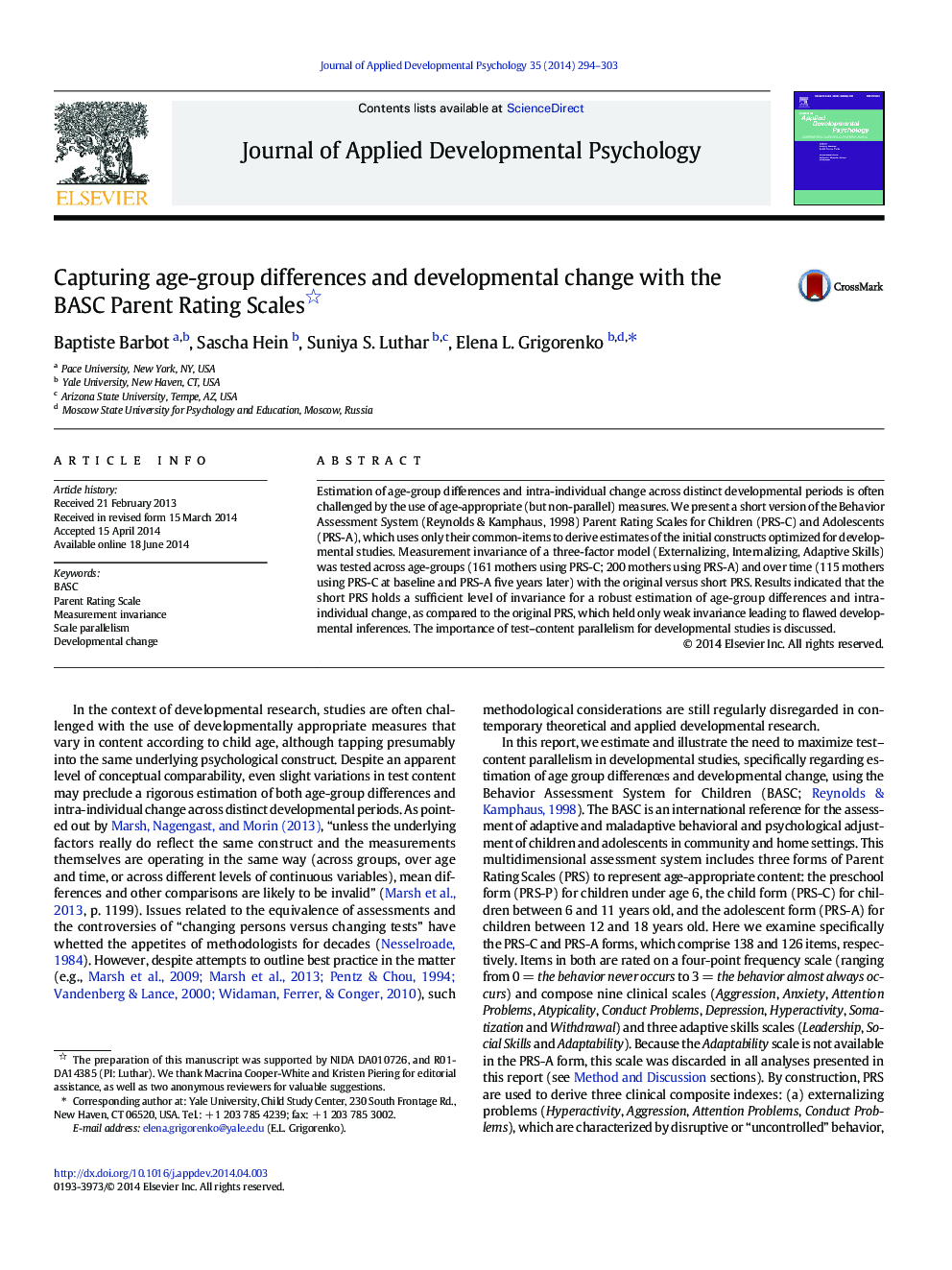| Article ID | Journal | Published Year | Pages | File Type |
|---|---|---|---|---|
| 359636 | Journal of Applied Developmental Psychology | 2014 | 10 Pages |
•We show the need to maximize test–content parallelism in applied developmental studies.•We compare the level of measurement invariance reached with parallel vs. non-parallel scales.•We estimate biases resulting from using non-parallel scales for two age groups.•Only scales with parallel content hold a level of invariance proper for developmental studies.
Estimation of age-group differences and intra-individual change across distinct developmental periods is often challenged by the use of age-appropriate (but non-parallel) measures. We present a short version of the Behavior Assessment System (Reynolds & Kamphaus, 1998) Parent Rating Scales for Children (PRS-C) and Adolescents (PRS-A), which uses only their common-items to derive estimates of the initial constructs optimized for developmental studies. Measurement invariance of a three-factor model (Externalizing, Internalizing, Adaptive Skills) was tested across age-groups (161 mothers using PRS-C; 200 mothers using PRS-A) and over time (115 mothers using PRS-C at baseline and PRS-A five years later) with the original versus short PRS. Results indicated that the short PRS holds a sufficient level of invariance for a robust estimation of age-group differences and intra-individual change, as compared to the original PRS, which held only weak invariance leading to flawed developmental inferences. The importance of test–content parallelism for developmental studies is discussed.
